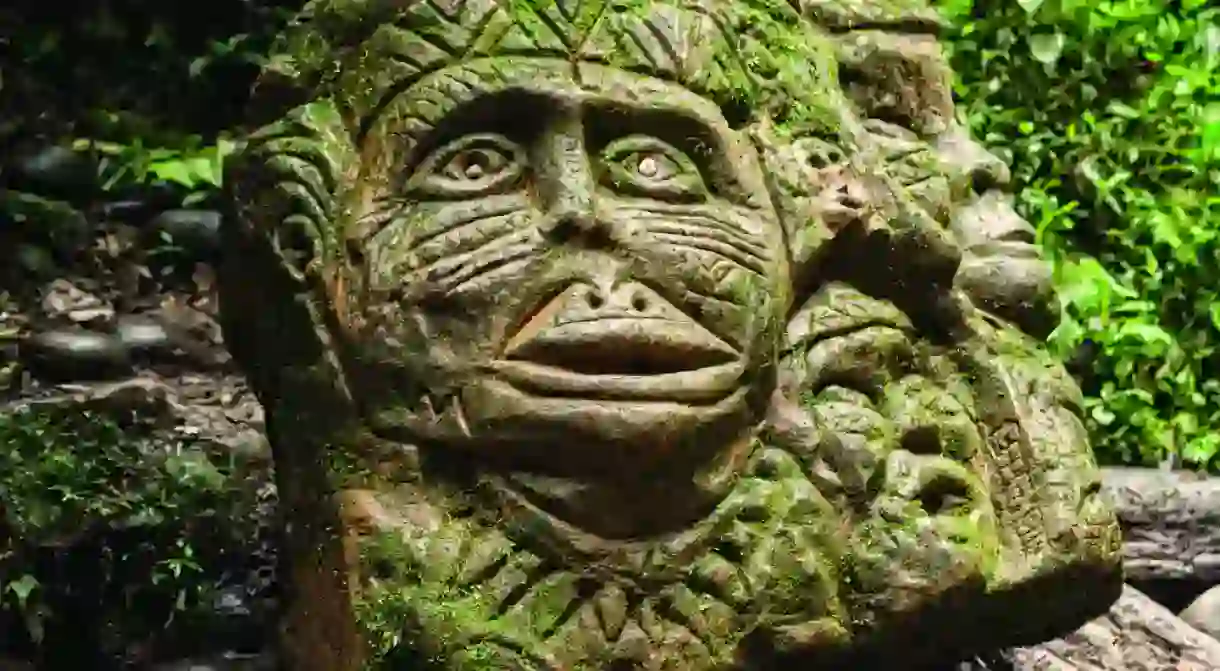The Best Pre-Incan Sites to Visit in Ecuador

While many tourists flock to South America to see ancient Incan ruins, few realize that the remains of several older and more ancient cultures exist throughout Ecuador. Many of these cultures existed long before the arrival of the Inca and what we know about them has been gleaned from many of the scientific excavations at these archaeology sites.
Museo de Sitio de Tulipe
The Yumbo tribe of Ecuador lived to the west of Quito around 800 CE until leaving the region in 1660 after the eruption of the Pichincha Volcano. They designed a complex system of large pools connected by an aqueduct. Archaeologists debate whether these pools were used as huge reflecting ponds to better read the night sky or if they were ceremonial baths. Regardless, these archaeological remains are striking in their design and structure. Al noroccidente de Pichincha se encuentra el templo ceremonial y museo de sitio Tulipe. ¡No dejes de visitarlo!. #GrandEcuador pic.twitter.com/XO4b2ZSsvv
— Grande Ecuador (@GrandEcuador) June 30, 2017
— Grande Ecuador (@GrandEcuador) June 30, 2017
Museo de Sitio La Florida
Museum
The Quitu tribe lived in the area around modern day Quito from about 2000 BCE until the arrival of the Spanish. Many of their archaeology remains are hidden under the modern city but one site in the neighborhood La Florida holds an ancient burial ground. Archaeologists excavated a tomb of a family of four, complete with urns, offerings and human remains. While the tomb itself was recently back-filled to prevent a cave-in like the one threatened by the April 2016 earthquake, the small museum is still open. Highlights include clothing hand-beaded from small pieces of Spondylus shells and an excellent collection of ceramics. El museo de sitio “La Florida”, muestra los hallazgos de un cementerio en Quito entre los años 220 d.C. a 680 d.C. #GrandEcuador pic.twitter.com/bcEi0DrapO
— Grande Ecuador (@GrandEcuador) July 2, 2017
— Grande Ecuador (@GrandEcuador) July 2, 2017
Complejo Arqueologico Rumipamba
Museum, Park, Ruins
A walking path through the Rumipamba Archaeology Park connects nine different excavation sites that provide clues to the Quitu tribe who lived in this region from 500 CE until the arrival of the Spanish. The ruins are a combination of large buildings meant for community purpose and smaller buildings that were probably homes. A portion of the original road used by the Quitu, a type of open tunnel covered by vegetation, is on display. The outdoor museum takes about 90 minutes to see. Visitando las Ruinas de Rumipamba en la ciudad de Quito, conociendo la arqueología e historia de nuestro Ecuador pic.twitter.com/NP1x3Q3uPt
— Silvana Lara Heras (@SilvanaLaraH) April 10, 2016
— Silvana Lara Heras (@SilvanaLaraH) April 10, 2016
Museo de Los Amantes de Sumpa
Resort
Just outside the resort town of Salinas lies a small museum dedicated to the preservation of an ancient burial ground that could be up to 7,000 years old. One attraction has become the heart and soul of the museum – a pair of skeletons. They are called the Lovers of Sumpa, a man and woman in their twenties who appear to have died while embracing one another. The museum also has a collection of ancient objects and displays explaining both ancient and recent history of the Santa Elena province.
Museo de Valdivia
Museum
Not far from the beach at Montañita is the town of Valdivia, the namesake of the culture that existed here from 3,500 to 1,800 BCE. Hundreds of small figures representing women have been discovered in this region. Most are very basic, with breasts and a small indent for a vulva, reminiscent of similar pieces from Paleolithic Europe. While many have been taken to museums in Quito, Cuenca and Guayaquil, this small museum in Valdivia has collected excellent examples of not only the Valdivia culture but several other ancient, coastal cultures as well. While this museum lacks good lighting and well-presented exhibits, the collection is an object of pride for the local community.
Museo de Agua Blanca
Museum, Park, Ruins
The community of Agua Blanca, which lies just outside of Puerto Lopez, is part of the Machalilla National Park. Ruins at the site included objects found from six different cultures – Valdivia, Machalilla, Chorrera, Bahía, Guangala and Manteña. Many of these pieces – such as obsidian arrowheads, seats carved from stone, figurines in the shape of monkeys, birds and pigs – are displayed in the small museum. The location of the archaeology dig is easily visited just a few steps away. Cultura y arqueología es la oferta de Agua Blanca. Un hermoso museo y aguas termales son parte del recorrido. #ViajeDeLaSemana pic.twitter.com/df5Yu22TE3
— Mintur Zonal 4 (@MinturZonal4) June 20, 2017
— Mintur Zonal 4 (@MinturZonal4) June 20, 2017
Museo de Sitio Cerro Hojas Jaboncillo
The museum at Cerro Hojas Jaboncillo is both an indoor collection of ancient objects and an outdoor archaeology excavation located with views of the surrounding coastal landscape. Archaeologists have uncovered over 600 structures belonging to the Manteño culture. The museum also holds one of the best collections of the “seats of power,” large stones carved with a u-shaped seat, often with a decorative pedestal, that some scholars believe were used by Manteño royalty.
Sobre investigación arqueológica en el Cerro Jaboncillo.https://t.co/8leJODlSU5 pic.twitter.com/YKIr4P1zTX
— GustavBrionesHidrovo (@gustavobh17) July 30, 2017













